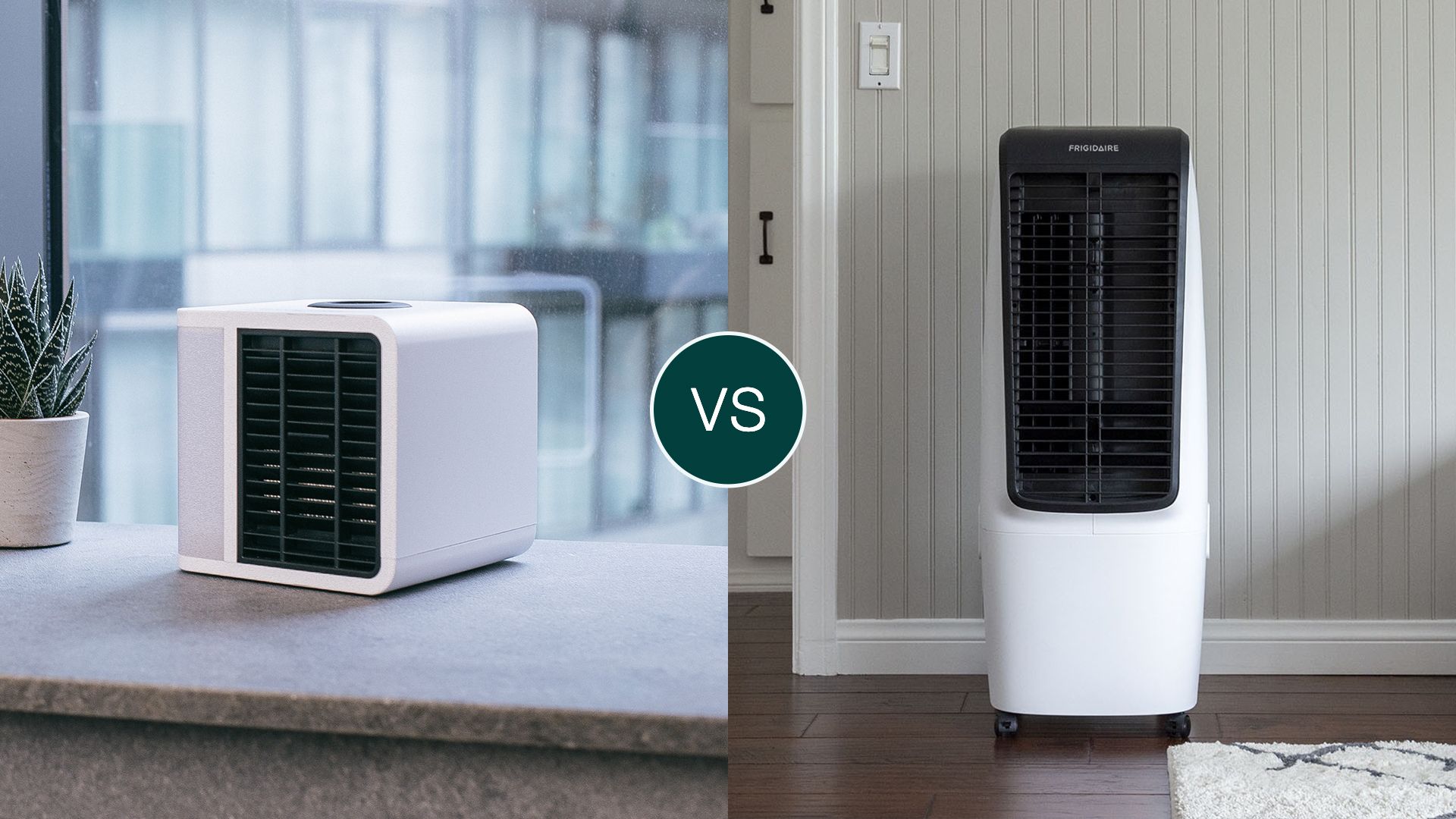Learning the main difference between an air cooler and an air conditioner will help you choose which device will become your helpmate during hot days.
The most common option to keep cool is air conditioners. However, some ACs are expensive to install and maintain. In addition, they consume a lot of energy and can have adverse effects on your body and the environment. So what would be the alternative cost-efficient option to keep cool?

evaLIGHTplus
The most powerful air cooler
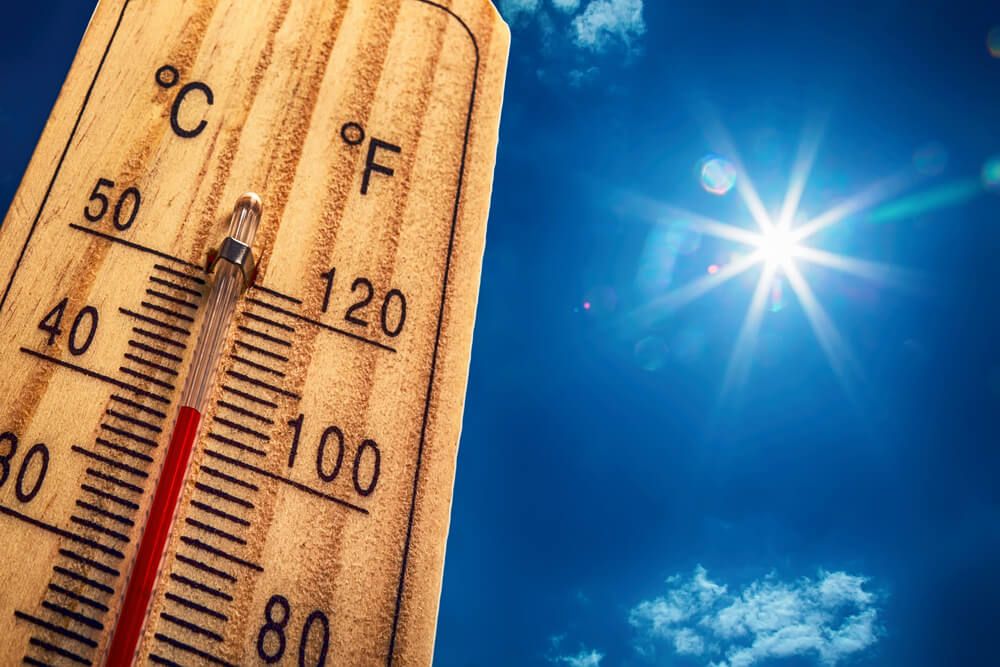
Evaporative air coolers (aka swamp air coolers) can be smart, portable, and they are designed to cool the air in your immediate space. Let's compare a swamp cooler vs. an air conditioner to see which one is more suitable for your living arrangements and needs.
Read also: How to Choose the Best Swamp Cooler For Home Or Small Office
Evaporative Cooler vs. Air Conditioner: 6 Key Differences
We have been using air conditioners for a long time. So, what is the difference between a swamp cooler and AC? Let us see how a swamp cooler can be a better option than AC by analyzing each feature and explaining the difference between a swamp cooler and an air conditioner.
1. The Cooling Method
We have been using air conditioners for a long time. Air coolers, in the other hand, are relatively new to the market in their modern versions. So, what is the difference between a swamp cooler and AC? Let us see how a cooler could be a better option than an AC by analyzing the main features and explaining the difference between a swamp cooler and an air conditioner.
2. How Does Each Appliance Work?
Air Conditioner (AC):
Here's a simplified description of the process of how the air conditioners work:
Compression: The cycle starts with a low-pressure, low-temperature refrigerant gas entering a compressor. The compressor squeezes the refrigerant, raising its pressure and temperature.
Condensation: The hot, high-pressure refrigerant gas then flows through a series of condenser coils that are exposed to outside air. As the gas cools, it condenses into a high-pressure, moderate-temperature liquid.
Expansion: This liquid passes through an expansion valve or capillary tube, where it experiences a pressure drop, causing it to expand and cool rapidly.
Evaporation: The cold, low-pressure liquid refrigerant moves through the evaporator coils. Then, indoor air is blown over these coils, and as the refrigerant absorbs heat, it evaporates back into a gas, cooling the air.
Heat Exchange: The refrigerant, now back in gas form but cooler than when it entered the compressor, returns to the compressor to start the cycle again.
The key to air conditioning is the transfer of heat from inside the space to the outside. This process also dehumidifies the air since moisture condenses on the cold evaporator coils and is drained away, helping to cool and dry the indoor environment.
Evaporative Air Cooler (also known as Swamp Cooler):
Evaporative air coolers work on the principle of evaporative cooling, which is much simpler and different from the refrigeration cycle used in ACs:
Evaporation: The air cooler contains a fan, water-soaked pads, and a water pump. The pump circulates water from the reservoir to the pads, keeping them wet.
Absorption: As warm, dry air passes through these wet pads, the water in the pads evaporates, which absorbs heat from the air. This heat exchange cools the air significantly.
Ventilation: The fan then pushes this cooled, moist air out into the space. For the cooler to be effective, hot dry air needs to be pulled into the cooler, and the humidified air must be allowed to circulate in the room and then escape.
The cooling effect from an evaporative cooler depends on the difference between the air temperature and the wet bulb temperature — the lower the relative humidity, the greater the potential for cooling. These coolers add humidity to the air, which can make them feel less comfortable in already humid conditions. However, in dry climate, the added humidity can make the cooled air feel even more refreshing.
2. Energy Efficiency
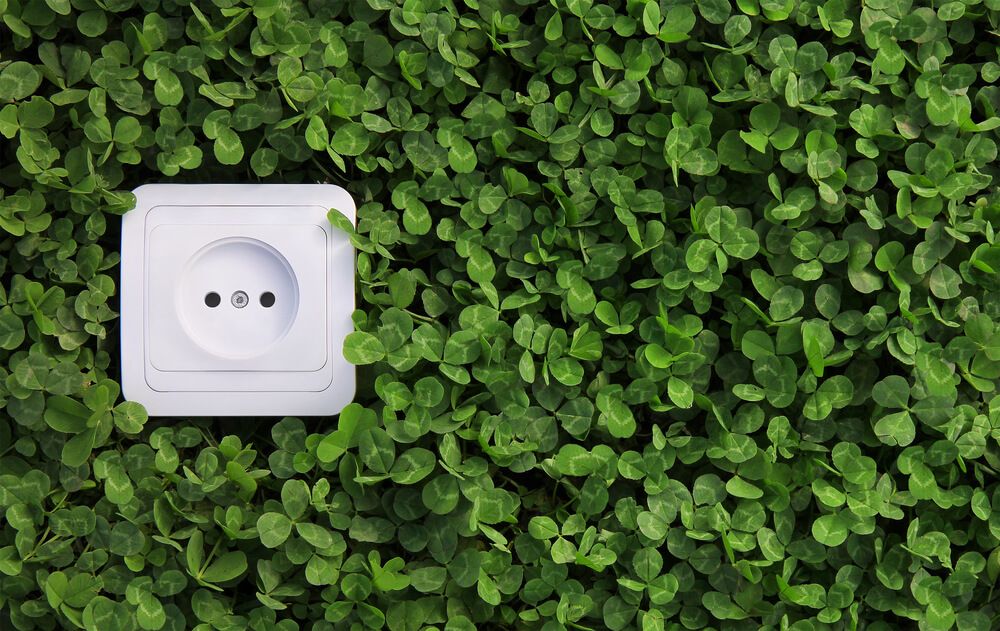
Air conditioners aren't considered luxury items, yet they're an investment not everyone can afford. Individual air conditioner units cost less, but if you have one in every room of your house or apartment, the cost of maintenance and electricity bills adds up to a hefty price over time.
High energy consumption affects more than just your budget. Air conditioners cost a ton more than swamp coolers to run. The more power you consume, the more fuel will be required to generate that power in the first place. This can adversely affect the climate, especially if your area does not use alternative energy sources.
Where do swamp air coolers stand when you compare the methods of evaporative cooling vs. air conditioning.
Great news! If you want to be more eco-friendly, go for swamp coolers. They don't need a massive power supply and can smoothly function on a low voltage. This means you save on utility bills and contribute to a safer environment. Swamp coolers consume from 200 to 400 watts of energy, so they can rightfully be called energy efficient.

3. Climate Considerations
You will be surprised when you see the role of the climate in the swamp cooler vs. the Ac comparison!
If you live in a dry climate, air conditioners will not work perfectly. Surprised? An air conditioner dries out the air — it will cool your surroundings and make your skin uncomfortably tight and leave you feeling dehydrated.
An air conditioner is a great dehumidifier. However, if the weather is dry and hot most of the time, you could purchase a separate humidifier or check out our other hot weather safety tips. Did you know that you need a constant 30% to 50% indoor humidity level to fight off viruses?
Air conditioners also aren't good at purifying the air, especially if you haven't replaced the filters on time or using a one-hose portable AC.
The hose recycles the air in a room repeatedly, so you don't get as much fresh air as with swamp coolers that allow you to keep the windows open or use them outdoors.
The air cooler vs. air conditioner battle winner is the air cooler in a dry climate!
Swamp coolers will only add to that if your area is constantly humid over 50% of the time.
However, if you live in a dry or normal climate, they can effectively cool down, humidify, and purify the air. Swamp coolers are great for hot and dry climates.
4. Maintenance
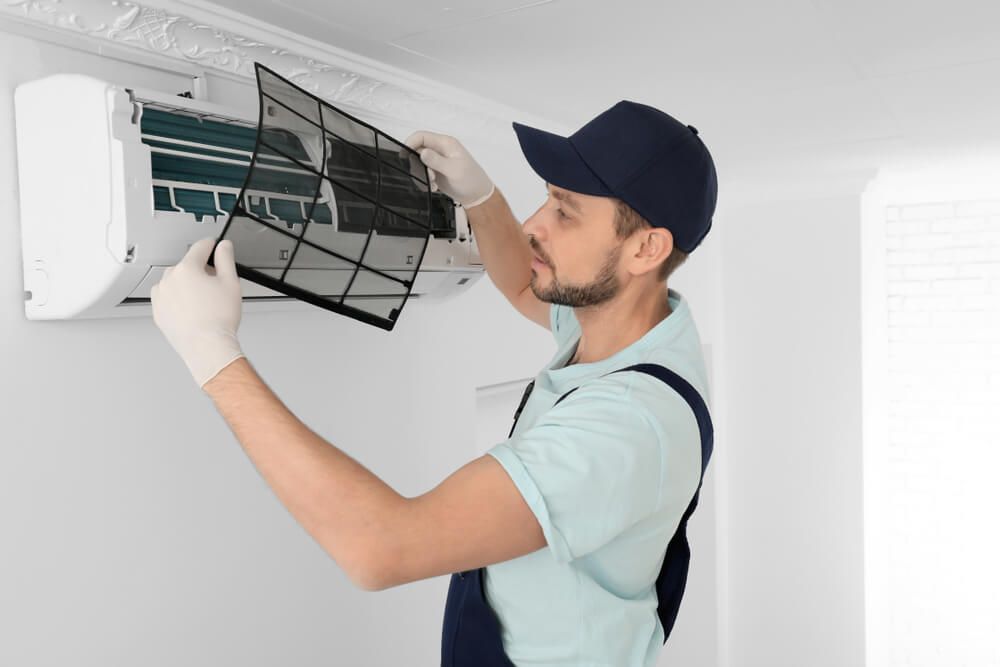
An air conditioner is a carefully designed machine and it requires multiple cleaning steps. First, you have to clean the filters monthly or as recommended, and every year they need a deep clean and professional maintenance.
Add the extra cost of changing filters and adding new refrigerants whenever the season changes. All of these steps consume both your time and money.
If you compare the maintenance in swamp coolers vs. AC, air coolers require less maintenance than air conditioners. They only need cleaning once a month by a simple formula of soap and water. Some units have fiber or cellulose filters that require regular cleaning and replacements, but they aren't a necessity — water acts as a filter. Swamp coolers are simpler in terms of maintenance.
To keep your device in optimal condition, rinse the water tank before changing the water and replace the cartridges as recommended.
Read more: Evapolar 101 — Taking Care of Your Personal Air Cooler
5. Noise
If you are still choosing between evaporative cooler vs. ac, this is the point that will make you decide.
An issue for light sleepers and those with a shorter attention span is the noise that accompanies every electric appliance. When they run for an extended period, air conditioners make it impossible to sleep peacefully. In addition, the noises these devices create are loud and distracting, disrupting not only your sleep but also your daily routine. Swamp coolers are generally quieter than portable and central AC units.

Luckily, most swamp coolers do not make any significant noise that can potentially disturb your sleep or divert your attention elsewhere. The only noise from a swamp cooler is the sound of a fan blowing. The low humming noise from a mini swamp cooler quickly gets mixed up with the soft background noises and can even be a white noise source.
6. Cost of swamp cooler vs. AC
It often comes down to money when creating a comfortable living space. Swamp coolers are a sustainable and economical solution to your basic need to keep the temperature down on a hot summer day. However, if we compare the costs of traditional air conditioners vs. swamp coolers, we will see that this factor sets these two devices miles apart.
You can buy a high-quality swamp cooler in the $100 to $300 price range, and it will provide maximum cooling comfort.
On the contrary, the cost of air conditioners only starts at three hundred for a portable or window version. A mini-split system will cost you a couple of thousand, including installation.
Read also: Swamp Cooler Guide: Buying Tips and Examples
7. Comparison of ACs vs Evaporative Air Coolers
Let us look at the main differences between these two cooling gadgets.
| Feature | Air cooler | Air conditioner |
| Working Principle | Evaporates water to cool the air; adds humidity. | Refrigerant-based cooling; removes humidity from air. |
| Energy Consumption | Lower energy consumption; more energy-efficient. | Higher energy consumption; less energy-efficient. |
| Installation | Typically portable; no professional installation. | Often requires professional installation. |
| Cost | Generally cheaper upfront cost. | More expensive upfront cost. |
| Maintanace | Simple maintenance (cleaning, water refill). | Complex maintenance (filter, refrigerant check, etc.) |
| Cooling Effect | Less effective in high humidity areas. | Effective in all climates, including high humidity. |
| Smart features | Wi-Fi connectivity, app control, voice commands. | Wi-Fi connectivity, app control, smart thermostats. |
| Space Suitability | Ideal for small spaces or personal cooling. | Can cool entire homes or large spaces. |
| Noise Level | Generally quieter than air conditioners. | Can be noisier, depending on the model. |
| Portablility | Often designed to be portable. | Fixed installation; window units are less portable. |
| Enviromental Impact | Uses water as a cooling medium; more eco-friendly. | Uses refrigerants, which can have a higher eco impact. |
| Ventilation Required | Needs a fresh air source for optimal performance. | Recirculates existing indoor air. |
| Humidification | Adds moisture to the air, which can be beneficial in dry climates. | Often dehumidifies the air as it cools. |
7. Pros and Cons of Air Coolers vs. Air Conditioners
Let us compare these two great cooling tools.
Air Coolers:
Pros:
- Energy Efficient: Air coolers consume less electricity compared to air conditioners, leading to lower energy bills.
- Low Maintenance: Typically, air coolers require less maintenance — mainly cleaning and water refilling.
- Eco-Friendly: They use water as a cooling medium and do not rely on refrigerants, which can be harmful to the environment.
- Adds Humidity: Beneficial in dry climates, as they add moisture to the air, which can help maintain skin hydration and comfort.
- Portability: Many air coolers are portable and can be easily moved from room to room.
- Cheaper Installation: Air coolers are generally less expensive to purchase and install.
- Ventilation: They work best with a continuous supply of fresh air and can be used with open windows and doors.
Cons:
- Climate Dependent: Effectiveness is reduced in high humidity, as they rely on the ability to evaporate water into the air. Basically, you want a swamp cooler for a dry climate or an air conditioner for a wet one.
- Limited Cooling: Air coolers may not provide the same comfort level as air conditioners in very hot temperatures.
- Regular Water Supply Needed: Requires a continuous water supply, which could be a concern in areas with water scarcity.
- Maintenance of Water Tank: Can be a breeding ground for mold and bacteria if not cleaned regularly.
- Space Limitation: Generally cool a smaller area compared to air conditioners.
- Noise: Some units might be noisy due to the fan operation.
- Humidity Issues: In closed or poorly ventilated spaces, they can over-humidify the air, leading to discomfort and potential harm to electronic devices.
Air Conditioners:
Pros:
- Effective Cooling: Provide consistent cooling regardless of the external humidity or temperature.
- Dehumidification: Lower humidity levels, which is beneficial in humid climates.
- Variety of Options: Wide range of types and sizes to fit different needs, from portable units to central systems.
- Air Quality: Many AC units come with filters that can improve indoor air quality by trapping dust, pollen, and other allergens.
- Thermostat Control: Allow precise control over the temperature in the room.
- Feature-Rich: Modern units may include features like smart home integration, timers, and sleep modes.
- Sealed Environment: Work well in sealed environments, which can be better for noise and security.
Cons:
- High Energy Consumption: Can be expensive to run, especially during peak summer months, less energy efficient.
- Initial Cost: Generally, the cost of purchase and installation is higher than air coolers.
- Maintenance: Require regular professional servicing and filter changes to operate efficiently.
- Use of Refrigerants: Potentially harmful to the environment due to the use of refrigerants.
- Dry Air: Can excessively dry out the air, which may be uncomfortable for some individuals.
- Lack of Ventilation: Recirculate the existing indoor air, which can get stale over time without proper ventilation.
- Installation: Can require significant changes to the home, such as ductwork, which is invasive and costly.
7. Why You Should Consider a Compact Cooler
Having compared swamp coolers and air conditioners, you can see that swamp coolers are a better option, considering the price, energy efficiency, maintenance, noise, and safety.
When it comes to swamp coolers, various options are available on the market. Unfortunately, many models are heavy and bulky, and you can't easily carry them around. However, you can find a compact model that is just as effective in cooling your personal space.
It is the Evapolar swamp cooler. – the number ONE winner of the ac vs. swamp cooler debate.
We will just clarify how to size it.
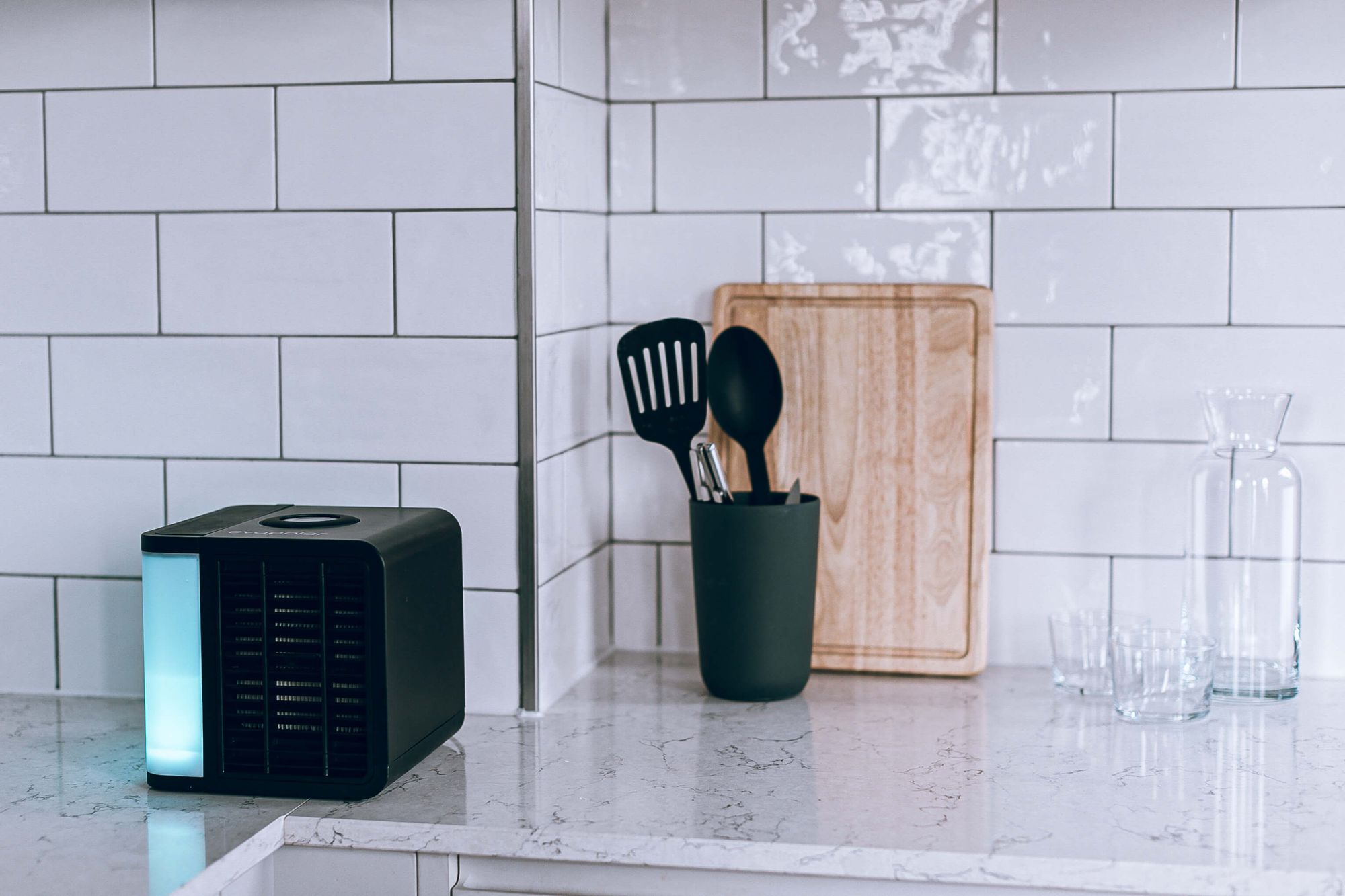
How do you size an evaporative air cooler?
Swamp cooler sizing differs from picking the air conditioner size because the devices serve a different purpose and use other cooling methods. Also, air conditioners use BTU (British Thermal Units) to measure cooling capacity, while air coolers work with CFM (Cubic Feet per Minute). However, it is common to see both units on evaporative coolers, so we made an evaporative cooler size guide.
You can also measure the evaporative cooling potential in BTUs. It won't be as precise as it is for air conditioners. However, it is also a commonly used unit and can be helpful as a general guideline.
Swamp cooler sizing chart in BTU
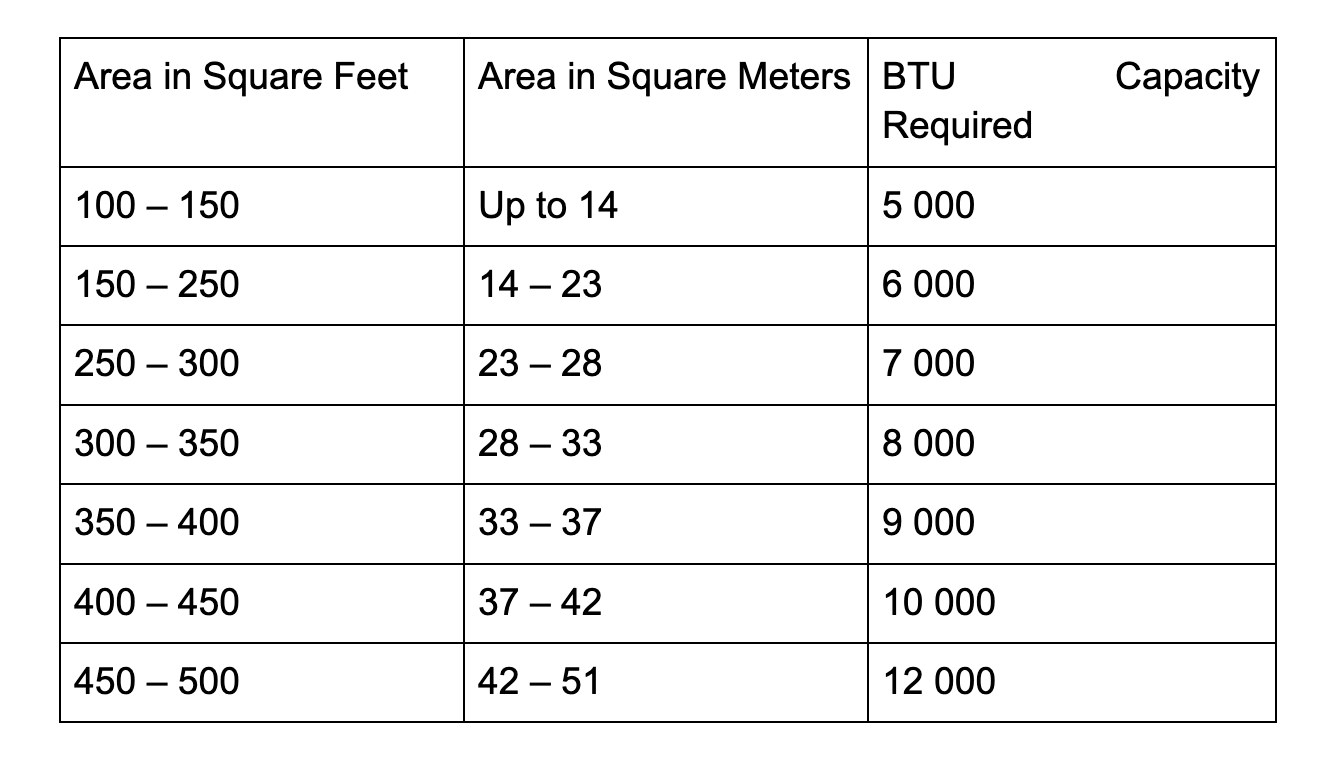
When sizing your evaporative cooler, make sure you also consider the ceiling height. If you are looking for a swamp cooler for the whole place and not just your personal cooling, the global rule is that an ideal evaporative cooler can replace the indoor air in under 2 minutes. This is where all the above calculations come in handy.
The cooling method differs between a portable air conditioner and an evaporative cooler. Air coolers use evaporation, making it a healthy and silent process.
Cooling power would be wrong to compare. Both ACs and air coolers use BTUs to measure the power. However, they serve a different cooling goal. Evaporative air coolers cool down your immediate surroundings within moments, while air conditioners focus on the whole room. So, if you want to cool down the entire area, go with an AC. However, if you need a personal cooling method, a quality portable one will do the job.
With the Evapolar compact air cooler, you get the following benefits:
It can follow anywhere you go. So you can carry this unique cooling gadget with ease.
It is easy to move the cooler around, as it is lightweight. Moreover, it comes with a handle.
It cools your personal space. Evapolar only functions on the person close to it and effectively cools down their temperature according to their preferences.
It's durable. Evapolar's construction material is highly durable. Additionally, the devices' moisture pads (or filters) are made from the patented evaBreeze material.
Read also: The Best Portable Air Cooler in 2021
Note that the Evapolar swamp cooler does not require any extra work to start using it.
Is a Swamp Cooler Better Than an Air Conditioner: Wrap Up
Swamp coolers are gaining well-deserved popularity due to their ability to cool down an area without harsh chemicals effectively and for a much lower price than AC. If you look at how much people pay to buy, install, and maintain an AC unit and how much power they consume, a swamp cooler is a more affordable option in the long term. It is true that air conditioners offer a ton more features than swamp coolers. However, air coolers do a great job of cooling your personal space without dwindling energy resources.
If you buy an Evapolar cooler, you will get a mini electrical companion that will cool down your personal space, wherever you are!
FAQ
What is the fundamental difference between how swamp coolers and air conditioners cool the air?
Swamp coolers do the cooling via the natural process of evaporation by passing the air through over water-saturated pads to absorb heat. Air conditioners, on the other hand, use refrigerants in a closed-loop system to remove heat from the air and expel it outside the building.
Can swamp coolers be used in any climate?
Swamp coolers are most effective in dry climates where the added humidity can be a comfort benefit. In areas with high humidity, they are less effective and can make the indoor air uncomfortably moist, which is when you might consider the clean air of a good air conditioner.
How do the costs of operating a swamp cooler compare to an air conditioner?
Swamp coolers are generally less expensive to operate than air conditioners. They use less energy, typically 200 to 400 watts, compared to the several kilowatts that might be used by an air conditioner, resulting in lower electricity bills.
What kind of maintenance do swamp coolers require, compared to air conditioners?
Swamp coolers require regular pads cle and water tanks and need their water refilled. Air conditioners need filter changes, occasional refrigerant refills, and professional maintenance to ensure efficient operation.
Is it true that swamp coolers are quieter than air conditioners?
It depends on the model but generally, swamp coolers are quieter than air conditioners. It is mostly thanks to the way they function — since swamp coolers use fans to move air through moist pads, they can produce a gentle humming sound. At the same time, air conditioners use a compressor with a stronger noise.


